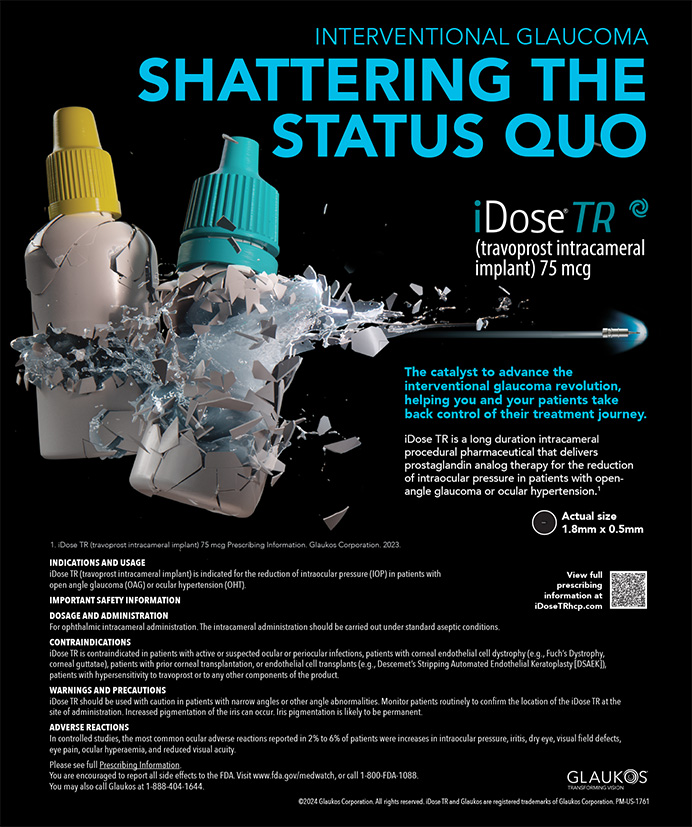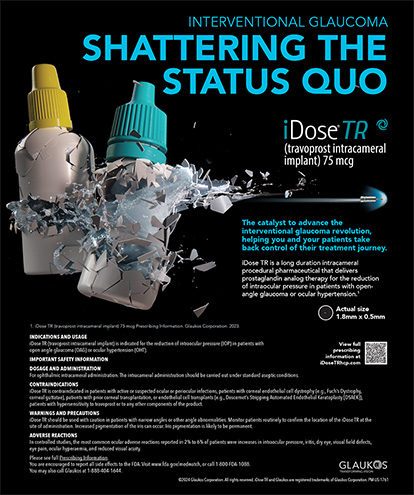

Cataract surgery is the most common surgical procedure across the globe. Given the high procedural volume and good results achieved, it may be easy for busy cataract surgeons to take the procedure’s impact on patients for granted. Cataract surgery can be life changing, especially for patients who have physical disabilities.
Benjamin Franklin is credited with saying, “If you fail to plan, you are planning to fail.” The wisdom of this statement holds true when planning cataract surgery on individuals with physical limitations. This article discusses points to consider when performing cataract surgery on a patient with a physical disability (Table and sidebar Case Example).

CASE EXAMPLE
A 67-year-old woman presented for a cataract surgery evaluation. The patient had recently become quadriplegic after a motor vehicle collision. She was an avid reader, but worsening cataracts and an inability to tilt her head to position her bifocals properly were making the activity difficult. This was especially frustrating to the patient given her recent confinement to a motorized wheelchair and increased difficulty performing other activities she had normally enjoyed.
Uneventful immediate sequential bilateral cataract surgery with a femtosecond laser was performed in an in-office OR. A trifocal IOL was implanted in each eye.
The patient was extremely satisfied with her outcome. For the first time in recent memory, she was able to look across the courtyard of her facility to watch birds and read her favorite novels without glasses.
PREOPERATIVE CONSIDERATIONS
Comorbidities. It is important to determine if the patient has nonocular comorbidities such as hearing loss, cognitive disabilities, or significant medical problems. Do they have a Foley catheter in place or require a colostomy bag or feeding tube?
Patient transferability. Is the OR staff equipped to transfer the patient? If not, can the patient’s personal care staff transfer the patient to a surgical bed?
Timing. Another important decision is whether to perform delayed or immediate sequential bilateral cataract surgery (DSBCS or ISBCS). DSBCS has been the method of choice for most cataract surgeons. ISBCS, however, may be preferred for patients with physical disabilities to limit the number of visits required and minimize transportation issues.1,2
Location. Should surgery be performed in an in-office OR, ambulatory surgery center, or hospital setting? The answer may depend on whether the patient has comorbidities and the center’s ability to transfer them and provide other care.
IOL selection. A few factors to consider when selecting an IOL are the patient’s level of physical disability, their ability to put on and remove glasses, and their daily activities. Severely disabled patients may lack the manual dexterity to handle glasses or the ability to adjust their head position to use bifocal glasses effectively.
Up to one-third of all falls in the elderly can be attributed to their use of bifocal or multifocal glasses.3 According to the Centers for Disease Control and Prevention, 12.1% of US adults have serious difficulty walking or climbing stairs.4 For patients whose physical disability makes using stairs difficult, spectacle dependence may increase their risk of falls and morbidity, making presbyopia-correcting IOLs a reasonable option. Many of these individuals, moreover, spend a lot of time reading and performing other near tasks, another reason to select a presbyopia-correcting IOL.
INTRAOPERATIVE CONSIDERATIONS
Patient positioning. Patients with physical disabilities often have neck and/or back pain and stiffness that may make conventional supine positioning uncomfortable. Also, the pain can make it difficult for them to follow instructions or remain still. Extra pillows, adjustment of the headrest, and/or Trendelenburg positioning may help (Figure). These changes to patient positioning, however, may make typical surgeon positioning uncomfortable. Sometimes, surgeons must adopt a new position in response. For example, if the patient needs to be in a Trendelenburg position, a cataract surgeon who typically operates temporally may have to operate superiorly to allow more room for their legs.

Figure. An example of Trendelenburg positioning.
Anesthesia. If a patient with a physical disability also has significant concomitant cognitive disabilities, then general anesthesia may be preferable to monitored anesthesia care with a topical anesthetic.
POSTOPERATIVE CONSIDERATIONS
Medication. Many patients with physical disabilities are unable to instill topical eye drops. Do they have a caretaker available who can administer postoperative medications? If not, a drop-free cataract surgery technique may be an appropriate choice.
Follow-up. Attending follow-up visits can be onerous for these patients. Performing ISBCS can reduce the number of postoperative visits. For patients who undergo DSBCS, postoperative visits may be combined to reduce examination time.
CONCLUSION
Proper planning is required for cataract surgery on physically disabled patients. Understanding each patient’s specific needs can set up cataract surgeons for success.
1. Hujanen P, Vaajanen A, Felin T, et al. Immediate sequential bilateral cataract surgery: a 13-year real-life report of 56,700 cataract operations. Br J Ophthalmol. Published online October 13, 2022. doi:10.1136/bjo-2021-320588
2. Malwankar J, Son HS, Chang D, et al. Trends, factors, and outcomes associated with immediate sequential bilateral cataract surgery among Medicare beneficiaries. Ophthalmology. 2022;129(5):478-487.
3. Chang DH. Multifocal spectacle and monovision treatment of presbyopia and falls in the elderly. J Refract Surg. 2021;37(S1):S12-S16.
4. Disability impacts all of us. Centers for Disease Control and Prevention. Accessed July 11, 2023. https://www.cdc.gov/ncbddd/disabilityandhealth/infographic-disability-impacts-all.html




